= Copiapoa desertorum F.Ritter
Kakteen Südamerika 3: 1060. 1980
Accepted Scientific Name: Copiapoa taltalensis (Werderm.) Looser
Revista Chilena Hist. Nat. 33: 614. 1929
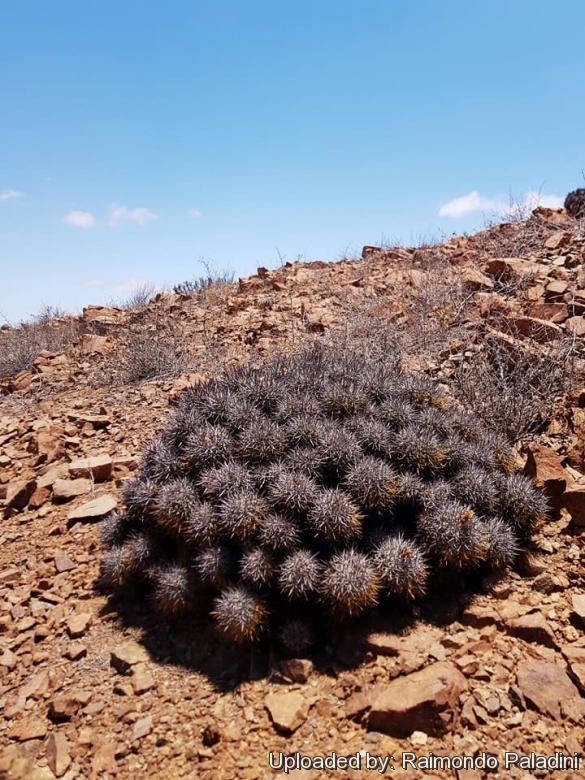
Copiapoa taltalensis subs. desertorum (Copiapoa desertorum) Photo by: Raimondo Paladini
Copiapoa desertorum, Chile Jannuary 2018.
Origin and Habitat: It is found along the coast near Cifuncho both inland and in its surroundings. Antofagasta Region. Chile.
Altitude: 20-420 metres above sea level.
Synonyms:
See all synonyms of Copiapoa taltalensis
back
Accepted name in llifle Database:Copiapoa taltalensis (Werderm.) LooserRevista Chilena Hist. Nat. 33: 614. 1929Synonymy: 20
back
Description: Copiapoa desertorumSN|1394]]SN|1394]] is a form or subspecies of the very variable Copiapoa taltalensisSN|1391]]SN|1391]] which form a complex of related taxon. It is still unclear whether this variable complex is one or several species. There is so much variation that most authors choose to lump them together. Copiapoa desertorumSN|1394]]SN|1394]] is an hardy desert type that distinguishes for the darker coloured spines and for the rarely seen red flowers. This flower colour is rare among Copiapoa which tend to be uniformly yellow.
Habit: It branches very sparingly from the base to form large clusters up to 70 cm tall and 50 cm across.
Roots: Tuberous, long, with a slightly narrowed neck.
Stem: Globose to somewhat elongated, 6 to 10 cm in diameter, pale green or olive green crowned by a dense mass of silky grey or creamy white wool, particularly at flowering time.
Ribs: 10 to 17 prominent, not wavy, obtuse up to 15 mm. wide.
Areoles: Round to oval, covered with white or greyish-brown felt or wool up to 1 cm apart.
Spines: Straight brown/tan or blackish (later grey) more or less uniform.
Radial spines: 7-12 about 1,5-4 cm long.
Central spines: 2 to 6 stronger 2-5 cm long.
Flowers: Diurnal closing at night, protracting the period of opening many days and arising on the crown, often several at a time, nearly hidden in the dense wool. Glossy, pale yellow, some with red/pink tones or red, 3,5-4,2 cm long and up to 5,5 cm in diameter, and with a faint scent.
Blooming season: Flowers throughout the whole summer.
Fruits: Red, globose to ovoid about 14 mm in diameter and scaly.
Seeds: Small, 4 x 0.9 mm glossy black.
Subspecies, varieties, forms and cultivars of plants belonging to the Copiapoa taltalensis group
Bibliography: Major references and further lectures
1) Adriana Hoffmann “Cactáceas en la Flora Silvestre de Chile” 1st edition, 1989
2) Schulz R., (2006). “Copiapoa 2006” Schulz Publishing.
3) Edward Anderson “The Cactus family” Timber Press, Incorporated, 2001
4) David R Hunt; Nigel P Taylor; Graham Charles; International Cactaceae Systematics Group. "The New Cactus Lexicon" dh books, 2006
5) F.Ritter “Kakteen Südamerika” 3: 1072 1980.
6) Graham Charles “Copiapoa” Cirio Pub. Services, 1999
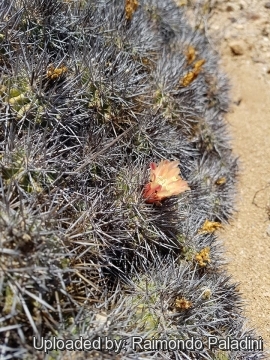 Copiapoa desertorum, Chile January 2018. (Copiapoa desertorum) Photo by: Raimondo Paladini
Copiapoa desertorum, Chile January 2018. (Copiapoa desertorum) Photo by: Raimondo Paladini Copiapoa desertorum, Chile January 2018. (Copiapoa desertorum) Photo by: Raimondo Paladini
Copiapoa desertorum, Chile January 2018. (Copiapoa desertorum) Photo by: Raimondo Paladini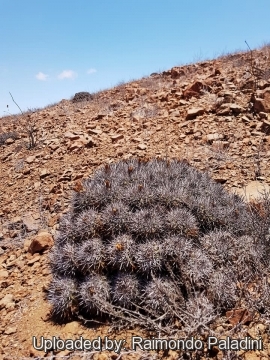 Copiapoa desertorum, Chile January 2018. (Copiapoa desertorum) Photo by: Raimondo Paladini
Copiapoa desertorum, Chile January 2018. (Copiapoa desertorum) Photo by: Raimondo Paladini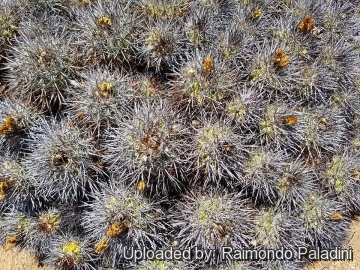 Copiapoa desertorum, Chile January 2018. (Copiapoa desertorum) Photo by: Raimondo Paladini
Copiapoa desertorum, Chile January 2018. (Copiapoa desertorum) Photo by: Raimondo Paladini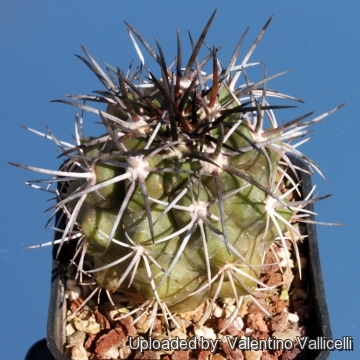 Copiapoa desertorum, RS 1427 Taltal-Las Guaneras, 02 Antofagasta, Chile. Juvenile speciemen. (Copiapoa desertorum) Photo by: Valentino Vallicelli
Copiapoa desertorum, RS 1427 Taltal-Las Guaneras, 02 Antofagasta, Chile. Juvenile speciemen. (Copiapoa desertorum) Photo by: Valentino Vallicelli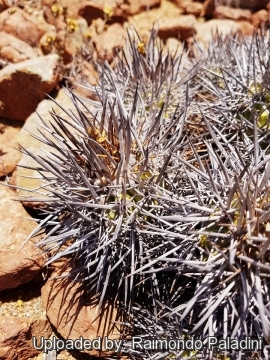 Copiapoa desertorum, Chile, January 2018. (Copiapoa desertorum) Photo by: Raimondo Paladini
Copiapoa desertorum, Chile, January 2018. (Copiapoa desertorum) Photo by: Raimondo PaladiniCultivation and Propagation: Considering that Copiapoa desertorumSN|1394]]SN|1394]] comes from a habitat with an extremely arid climate, they are remarkably tolerant of pot culture. These plants have taproots and are susceptible to overwatering. They requires also an appropriate air circulation. Copiapoas are summer grower species easy to cultivate.
Growth rate: This is a slow growing cactus kept for the beauty of its form that will make clumps given the best conditions.
Soils: It likes very coarse mineral cactus mix soil, but can become too elongated if compost is too rich.
Repotting: Use pot with good drainage.
Watering: It requires light but regular waterings in summer, but let the soil mix dry between waterings, but do not overwater (Rot prone), it must be strictly kept dry throughout the winter quiescent period since it is very sensitive to any moisture excesses keep dry in winter.
Fertilization: Feed with a high potassium fertilizer in summer.
Hardiness: Not highly tolerant of a great deal of frost. They need to be kept in a cool place during winter rest and are resistant to light frost if kept on the dry side prior to, and during, cold weather ( they are hardy to -2 C ° C short periods). However some warmth throughout the year will increase the grower's success (minimum 5° to 10°C during rest season).
Exposition: Requires full sun or light shade and careful watering to keep plant compact with strong coloured spines. Tends to bronze in strong light, which encourages flowering and heavy spine production. Light shadow my be useful in the hottest summer days.
Uses: It is an excellent plant for container growing. It always looks good and stays small. It look fine in a cold greenhouse and frame or outdoor in a rockery.
Pests & diseases: It may be attractive to a variety of insects, but plants in good condition should be nearly pest-free, particularly if they are grown in a mineral potting-mix, with good exposure and ventilation. Nonetheless, there are several pests to watch for:
- Red spiders: Red spiders may be effectively rubbed up by watering the infested plants from above.
- Mealy bugs: Mealy bugs occasionally develop aerial into the new growth among the wool with disfiguring results, but the worst types develop underground on the roots and are invisible except by their effects.
- Scales: Scales are rarely a problem. It is wise to treat your whole collection with a systemic insecticide twice a year in spring and autumn.
- Rot: Rot is only a minor problem with cacti if the plants are watered and “aired” correctly. If they are not, fungicides won't help all that much. To prevent rottenness it is also advisable to surround its root neck by very rough sand or grit, this help a fast water drainage.
Propagation: Seeds (or offsets if available), Grafting is often used to speed growth rate and to create a back-up to plants in collection. Seeds germinate in 7-14 days at 21-27° C in spring, remove gradually the glass cover as soon the plants will be well rooted (ca 1-2 weeks) and keep ventilated, no full sun for young plants!
















